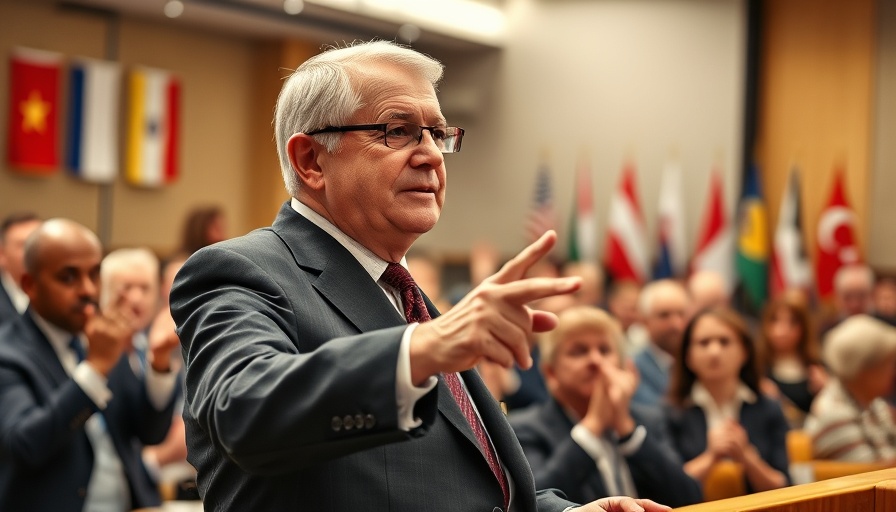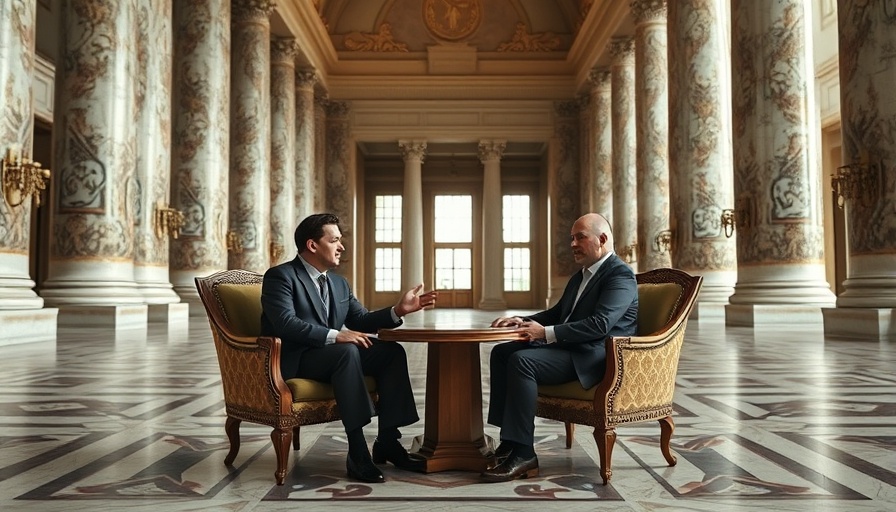
A Historic Ceasefire: A New Era in the Middle East?
On October 12, 2025, President Donald Trump heralded an unprecedented diplomatic milestone during his visit to Israel, declaring the end of the two-year-long war in Gaza. This announcement followed a complex swap involving the release of 20 living Israeli hostages by Hamas and nearly 2,000 Palestinian prisoners by Israel, reigniting hopes for a lasting peace in the region.
The Heartfelt Brutality Behind the Ceasefire
The emotional scenes that unfolded as families reunited were powerful testaments to the human stakes involved. In Tel Aviv, exuberant crowds gathered at "Hostage Square" to celebrate the return of their loved ones, while in Gaza, tears of joy marked the simultaneous release of Palestinian detainees. Nevertheless, the jubilation veils underlying tensions shaped by years of conflict, suggesting that this ceasefire might be merely a pause in hostilities rather than a pathway to lasting harmony.
Challenges Looming Ahead
With celebrations still echoing across the region, experts continue to express skepticism regarding the sustainability of this ceasefire. Trump's rhetoric underscoring the triumph of peace fails to adequately capture the complex realities that remain unaddressed. Key questions linger: Will Hamas disarm? Who will take charge of the reconstruction of Gaza, and how will the delicate political balance be maintained?
As the world breathes a collective sigh of relief, it must also confront the potential pitfalls of overlooking the fundamental issues that have fueled this conflict for decades. The absence of Hamas and Israeli representatives at the subsequent peace summit in Egypt emphasizes the precariousness of the existing agreements.
International Perspectives: A United Front or a Temporary Alliance?
In his remarks to Israel’s Knesset, Trump framed the exchange of hostages and prisoners as a watershed moment, asserting it could pave the way for broader regional peace. Many world leaders echoed this sentiment at the summit in Egypt where further discussions of governance, reconstruction, and security protocols were conducted. However, some analysts caution that the lack of Palestinian input in these negotiations could cement a power imbalance rather than fostering a fair resolution.
Nader Hashemi, a professor of Middle East politics, expressed concerns that Trump’s peace plan might represent a “gross distortion” of what true peace should entail. Rather than achieving a comprehensive solution, these events might only serve to mask ongoing hostilities.
The Global Reactions: Mixed Emotions Over Fragile Peace
Leaders from around the globe, including Canada’s Prime Minister Mark Carney, have recognized the significance of this moment as an opportunity to work collaboratively towards stability. Nonetheless, the absence of a clear, shared vision for future governance raises caution flags regarding the feasibility of sustained peace efforts.
While Trump’s declarations resonate through the halls of international politics, grassroots sentiments reveal a complexity that often eludes high-level discussions. The emotional resonance of families reuniting is juxtaposed against the lived reality of individuals in conflict-zoned areas still grappling with loss.
A New Dawn or Just a Change in Tides?
The exchanges that took place could signify what has been described as a historic dawn; however, the faint whispers of dissent and skepticism remind us that the road to peace is rarely linear. As the world watches and waits, the potential for reconciliation hangs in the balance, influenced by longstanding grievances and contemporary realities.
With international attention directed at Gaza, it’s crucial that efforts towards reconstruction and peace are inclusive. The latest developments may change perceptions, but for a true resolution, all voices, especially those of the people directly affected, must be heard.
 Add Row
Add Row  Add
Add 




Write A Comment